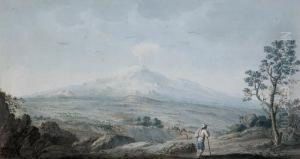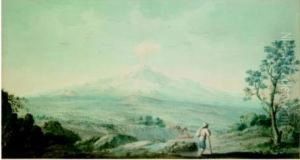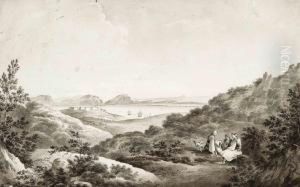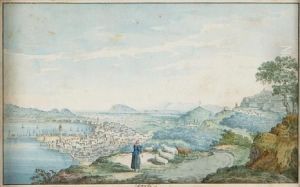Willey Reveley Paintings
Willey Reveley was an English architect and draughtsman, known for his contributions to the Neoclassical movement. Born in 1760, Reveley's career was relatively short-lived, as he died prematurely in 1799, at the age of 39. Despite his brief career, Reveley managed to leave a lasting impact on the architectural scene of his time, particularly through his association with notable figures of the era and his work on various projects in England and Greece.
Reveley was educated in architecture and showed an early interest in the neoclassical style, which was popular in the late 18th century. This style sought to revive the principles and aesthetics of ancient Greek and Roman architecture, emphasizing symmetry, simplicity, and grandeur. Reveley's education and travels, particularly to Italy and Greece, significantly influenced his architectural perspective and style. His sketches and drawings from these journeys captured the ruins and landscapes of the ancient world, contributing valuable insights to the study and appreciation of classical architecture.
One of Reveley's most significant professional relationships was with William Godwin, the political philosopher, and Mary Wollstonecraft, the feminist writer. Reveley's connection to Godwin and Wollstonecraft placed him within a circle of radical thinkers and writers, which influenced his architectural and philosophical outlook. This association also led to his involvement in various projects, including plans for buildings and urban designs that reflected his progressive views on architecture and society.
In addition to his architectural work, Reveley was involved in the Elgin Marbles controversy. He was a strong advocate for the removal of the marbles from Greece to England, believing that their preservation could be better ensured in the British Museum. This stance placed him at the center of a debate that touched on issues of cultural heritage, conservation, and imperialism.
Despite his contributions to architecture and the intellectual milieu of his time, Willey Reveley remains a relatively obscure figure in the history of architecture. His early death undoubtedly cut short a career that might have seen further accomplishments and recognition. Nonetheless, his existing works and drawings continue to be studied for their artistic and historical value, offering insights into the neoclassical movement and the intellectual currents of late 18th-century Britain.



